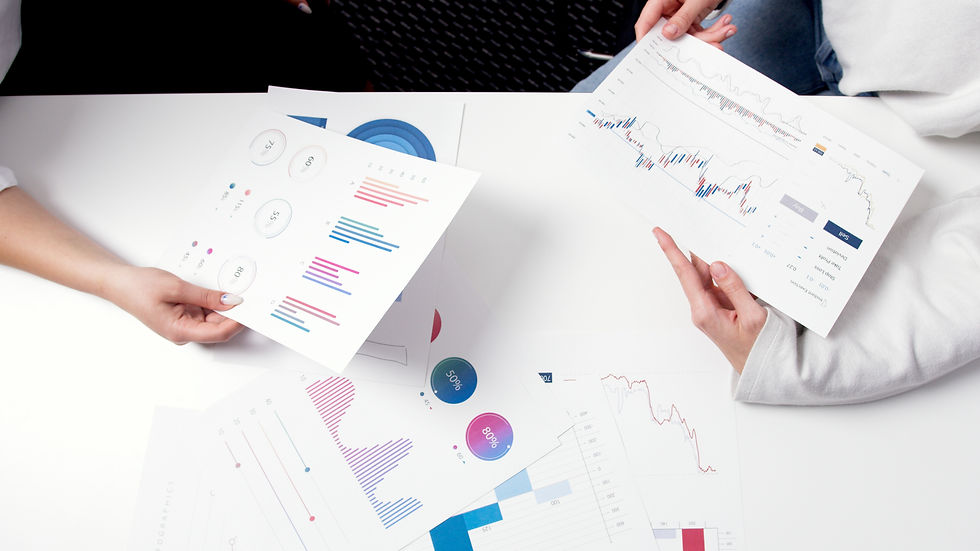Summary Steps of Data Analysis
- Cristian Iacomachi

- Aug 11, 2022
- 3 min read
Updated: Nov 8, 2023

Author: Ekinsu ÇİÇEK
Date of Publication: 11/08/2022
We use data analysis in many business areas like finance, politics, marketing, etc. We can define it as the process of getting useful information from data and deciding based on it. Data is hard to deal with, but it can be advantageous with the right moves and processes.
In Data Analysis, it is essential to understand the operations that you will apply to the data. First, you should be sure about what you are going to research. Then, you should collect the data relating to your research interest. After gathering the data, you must make it clean for your analysis. Later, you analyze your data with the necessary analysis tools depending on your research interest. Finally, you can summarize and share your findings and results. Now, let's look deeper into these processes.

Determining Your Objective
As I mentioned above, the first thing you should do in data analysis is to determine your research interest, objective, or question. These could be a problem you must solve in your business or academic research. In all cases, defining your purpose at the beginning makes the data analysis process more straightforward. This is because the entire analysis depends on that goal.
Collecting Data
The second step is to collect data. After deciding on your objective, it is time for you to gather relevant data according to your research. In this step, you must resolve which kind of information and how big of data you need. These can be numeric data or descriptive data, or both. We put all these data into three groups.
First-Party Data: The data is already in the companies' systems or collected from their customers. It generally includes information like customer surveys or internet activity.
Second-Party Data: They are from private sources or other companies. It might include information like in the first-party data. These kinds of data are most likely to be organized.
Third-Party Data: These data are data obtained from numerous sources and organizations. They are often not organized and structured because third party sources generally collect them for purposes such as market research.
Cleaning Data
In the next and the third step, you should clean your data. After collecting and aggregating data from many sources and organizations, you should optimize it for the analysis step. At this stage, you should identify and clean the data, such as missing or redundant data and incorrect data entry. This mainly happens since such problems can skew the analysis results. So, this step is crucial because it has the most significant impact on the accuracy of your research.

Data Analysis
Now, it's the time for the most exciting step, analysis! Your goal will significantly impact the type of data analysis you perform but there are a lot of techniques (Hillier, 2022). These techniques can be regression analysis, time-series analysis, and univariate or bivariate analysis. Of course there are a few others that you may be familiar with. Depending on your goal, you'll hunt for hidden patterns and relationships using data analysis tools and procedures and discover insights and forecasts. There are four stages of analysis as follows.
1. Descriptive Analysis: This analysis defines what has occurred already. It's a common first step in the investigation.
2. Diagnostic Analysis: It is more concerned with diagnosing the problem than understanding why a particular problem occurred.
3. Predictive Analysis: It allows you to make a future prediction and forecast future growth using historical data.
4. Prescriptive Analysis: In this type of analysis, you make suggestions for the future. It is the last of the analysis stages.
Summarizing Your Findings
Once you have completed your analysis and received their conclusions, the last step in the data analysis process is to share the information. The goal of displaying work results in an effortless way is more complicated than simply disclosing them. This is because of getting the most out of their insights. So, you should usually supplement their findings with reports, dashboards, and clear and explicit visualizations (Rangaiah, 2021).[1] The importance of your problem or research will depend on how you present, evaluate, and present the data and findings. Thus, you should view this stage as equally important as the preceding ones.
We now inhabit a world that is overflowing with data as a result of computers and the internet. These days, analysts aren't the only ones able to analyze it. Practically anyone can follow these five stages with the proper training. However, the main goal is still to locate the solutions required to address some of their most significant business issues.




Kommentare